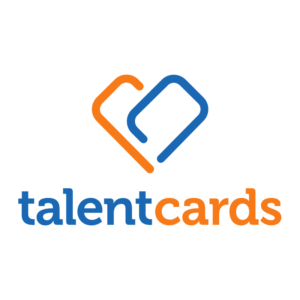Strategies To Take Microlearning To The Next Level
No matter what you’d like to train employees on, if you’re using microlearning to do so, then there are two important criteria your content must follow to be successful: your course should be short, taking ten minutes or less to complete, and each course should only cover one learning objective at a time. If you’ve taken the initiative and incorporated microlearning into your company’s employee training program, then you already understand that employees don’t always have time for long, drawn-out training sessions.
These are the basics, so how can you take your microlearning courses to the next level?
These 6 strategies will help you master microlearning and create exceptional employee training programs for your teams.
1. Identify Learning Objectives At The Beginning Of Every Course And Summarize Key Points At The End
One of the most important aspects of microlearning is clarity. While this is true of any training course, it’s especially important when you need to drive home a few key points in a short amount of time. When you only have at most ten minutes to deliver value to a learner, every minute counts.
Identifying learning objectives only needs to take up about 30 seconds of your course. Make sure that your intro identifies what is going to be covered and why it matters for the learner. By answering the questions "what" and "why," you’ll quickly get learners in the right mindset.
At the end of your course, you should summarize the key points to reinforce what employees have just learned. This will help them remember the most important information and apply it to their work. Again, this part only needs to take up about one minute of the whole module. The simple action of repeating information goes a long way in helping people retain and recall it when they need it.
2. Make Your Microlearning Courses Recurring
Since microlearning courses are short, reinforcement training is key if you want employees to actually retain information. Instead of cramming all the information into one long course, break it down into smaller pieces and make it a recurring program.
For example, you can create a series of ten-minute courses on a specific topic and deliver one course per week. This will keep the information fresh in employees' minds and allow them to apply what they've learned before moving on to the next topic.
Keep in mind that not every microlearning course you share with employees needs to be unique. Once you’ve created a collection of modules, you can set up a rotation for them to be reassigned to employees two or three times over the course of a year. As long as the material you’re delivering is engaging and relevant to employees and their work, then repeating a course won’t be a burden.
3. Diversify Your Microlearning Modules
When building your microlearning courses, you don’t have to limit yourself to just text and images. By mixing up the content and introducing short videos, audio clips, and questions throughout the course, you’ll keep learners engaged and interested. This will also appeal to different learning styles and make the content more accessible to everyone.
For example, let’s say you’d like to create a short training on improving customer experiences in a store. You can include a short audio clip at the beginning of a common customer question, add a video of how the employee should address the question, and then ask learners if there’s anything they would have added to the response. This variety will keep learners engaged and make the course more memorable.
4. Add Gamified Elements And Rewards
Microlearning and gamification are already a natural pairing. Adding elements like points, badges, and leaderboards to your courses gives learners an extra reason to engage with training on a regular basis. Even better, it’s a way to encourage engagement and friendly competition among employees.
You also shouldn’t underestimate the power of rewards. Even something as simple as a $50 gift card awarded to the employee who has gathered the most points at the end of each month can go a long way in encouraging people to engage with their training on a regular basis.
5. Create Learning Paths
Learning paths are a great way to structure microlearning courses and make them more comprehensive. By creating a series of courses that build upon each other, learners can progress through the material at their own pace and master the topic.
Beyond providing structure for employees, learning paths are also a way for you to ensure that people are actually engaging meaningfully with their training and learning the necessary skills. After an employee completes a course in the learning path, you can add a short quiz or assessment that they must pass before they can progress to the next element. This will help you and the employee ensure that they’re ready to move on to the next topic.
If it’s possible, your learning path should allow employees to see their cumulative progress as time goes by. Just being able to see the progress they’ve made in a visual format will encourage them to keep investing those five to ten minutes a day that add up in the long run.
6. Dedicate Some Microlearning Sessions Purely To Assessing Employee Knowledge
Building on the idea of incorporating quizzes in your learning paths, some days out of your microlearning program can be dedicated purely to assessment. This is one of the elements of delivering competency-based training—a learning approach that focuses on evaluating the performance of employees based on their ability to accomplish an objective. A well-designed assessment will not only help you determine if employees are learning new skills, but it will also help you evaluate if the courses themselves are delivering information successfully.
If one or two learners in your whole organization are struggling to pass your micro-assessments, then perhaps they just need to go back and review their material. But if a significant percentage of learners are performing poorly on your assessments, then there’s like a mismatch between the information you’ve provided and the questions you’re asking. By dedicating some microlearning sessions purely to assessing employee knowledge, you can determine whether the course is effective and adjust it as needed.
Keep in mind that the assessment part of your microlearning program should still follow the rule of taking under ten minutes to complete. Oftentimes, you don’t need to ask a lot of questions to evaluate employee knowledge—you just need to ask the right questions.
Bottom Line: A Little (Consistent) Training Goes A Long Way
It’s easy to underestimate the power of microlearning—employees probably won’t feel much of an impact after a few ten-minute courses. The key to making microlearning work in your company is consistency. One or two ten-minute sessions aren’t going to produce the results you’d like to see. But ten or fifteen microlearning sessions spread out over the course of a quarter is probably more time spent training than most employees will spend all year.
By creating courses that have clear learning objectives, are recurring, and incorporate different learning elements, you’ll give employees plenty of reason to want to spend just a little time every week learning something new.









